'Rooms can be theatrical and comfortable at the same time': Top tips for decorating with conversation in mind
Carefully placed furniture encourages conversations, says Emma Burns, of Sibyl Colefax & Fowler
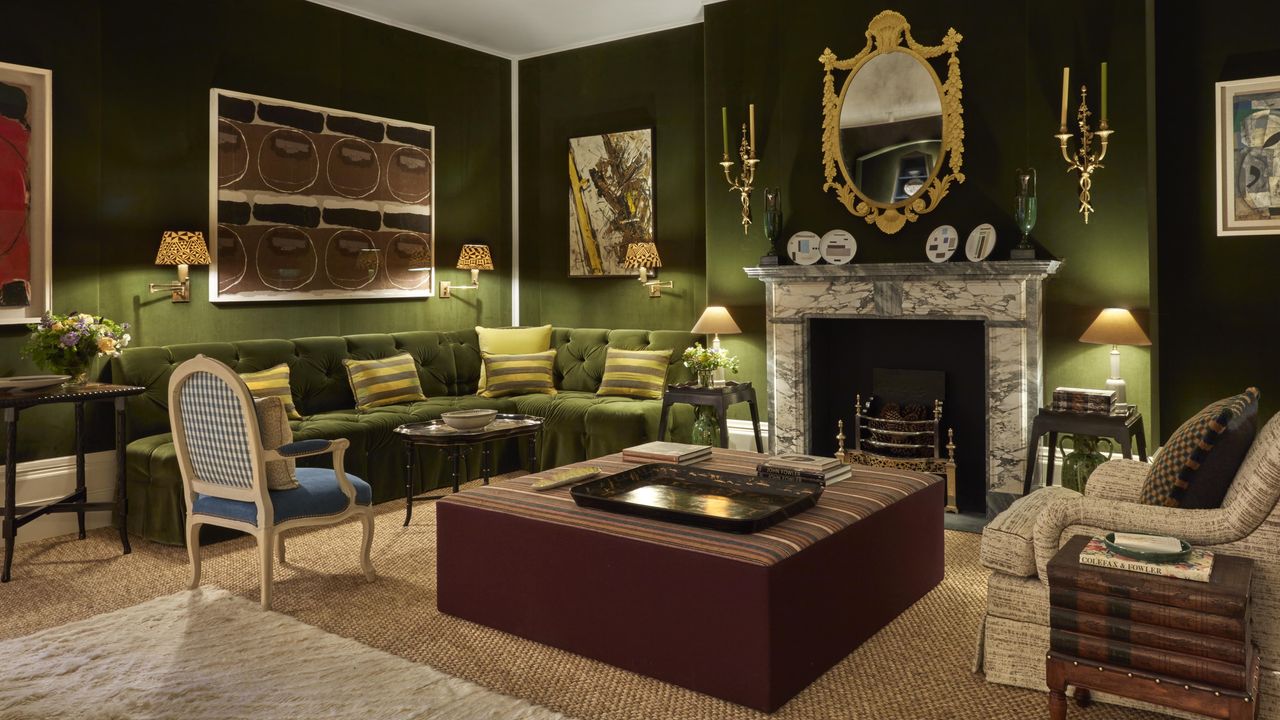

Looking around any grand English country house, it’s clear that the drawing room was, historically, a place for social interaction. Typically, the furniture is centred on a substantial fireplace, which would have provided warmth before the advent of central heating, with tall windows for natural light and to set off the fine country views. The drawing room at The Hurlingham Club in Fulham, London, is no different. As part of what the club defines as its ‘heritage rooms’, I was asked to help restore both the drawing room and the long gallery to their former glory, creating spaces for members to gather together throughout the day and evenings.
The challenge in the drawing room — something that applies in any of the spaces we decorate where the owners are keen on entertaining — is to create the maximum amount of seating without the results looking cluttered. It was also essential to build in plenty of flexibility. This is equally true at home: the seating layout should have the capacity to be expanded easily when friends and family arrive and contract to accommodate a couple alone on quieter days.
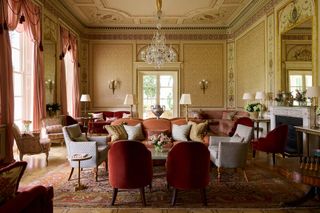
'If the shape of a piece of furniture is right for the room, the colour doesn’t matter,' says Emma Burns.
I was fortunate to spend my first two years at Sibyl Colefax & John Fowler working for Roger Banks-Pye. He taught me to examine the suitability of pieces for a certain room. That’s often down to a question of volumes. If the shape of a piece of furniture is right for the room, the colour doesn’t matter — that can always be changed. However, if the presence of a large sofa means that no other furniture can fit into the room, it’s not going to create an elegant result. It’s important to envisage the room as a whole, right from the start.
Other vital lessons learned were that rooms could be theatrical and comfortable at the same time. Whether planning a small room or a whole house, I always approach the challenge in the same way, addressing the furniture layout first. Once I’ve got my plan down on paper, I can think about the colours, patterns and shapes, but, until this layout is agreed, there’s no point in doing anything else. At this stage, we also establish where sockets will go and plan the lighting scheme so that no one trips over long table-lamp leads.
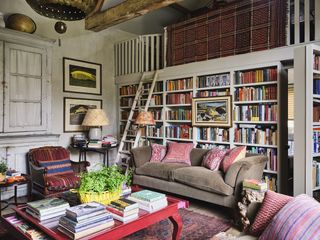
A library space, designed by Emma Burns, is as great for conversation with friends and family as it is for reading in.
I find symmetry comforting, so a pair of console tables flanking each side of the fireplace is always an appealing option. However, my advice is to achieve symmetry with care; too much will create an effect that is overly stiff and formal. In large spaces, two large sofas positioned back-to-back means a slim table can be inserted in between, providing the perfect surface for a pair of reading lamps. Two people sitting side-by-side rarely speak to each other. By swapping a sofa for a matching pair of armchairs, any railway-carriage arrangement is avoided and no one feels as if they are interviewing one other.
Different conversational corners can be created around a central coffee table or ottoman, provided side tables are strategically positioned to place a coffee cup or glass of wine. At the Hurlingham, I used lots of David Seyfried’s Editor’s chairs in a rich, rusty terracotta velvet, which pairs well with the blue-and-white armchairs. They can be pulled in at diagonals to create sociable triangles. The room has lovely, curved corners, so I designed a pair of L-shaped banquettes to sit in two of them. I love banquettes.




Although they are known for being an excellent space-saving device, they are extremely sociable and I adore the fact that you can cram lots of people on them. It’s also quite nice to be able to sit on one alone and look back into the room to observe the action. The second advantage is more decorative. Not only are banquettes a great way of furnishing a corner, but they are useful for balance, too.
Sign up for the Country Life Newsletter
Exquisite houses, the beauty of Nature, and how to get the most from your life, straight to your inbox.
When decorating a drawing room on a large scale, it’s essential to ensure there is the appropriate amount of fabric and exposed timber. Too many small chairs with legs and not enough skirts on sofas or armchairs should be avoided. Not only does it make a room look rather busy, but the chairs can also be moved around too easily, therefore upsetting the considered layout of the space. Unusually for a drawing room, no paintings are hung on the walls in the room I designed at the Hurlingham. There are so many decorative details, from the painted panels between the sections of damask wallpaper, the frieze under the ceiling and the ceiling itself, which very talented Italian artisans restored. Colours from all these elements informed the overall scheme.
I wanted to create a space that would look pretty in the daytime and glamorous in the evening. Classic silk curtains beautifully diffuse the sunlight and shimmer at night. I used different textures from velvet, nubby linens and weaves on the sofas and cushions, too. I was lucky to find the enormous rug at Gallery Yacou. It was perfect for this room, giving warmth, colour and texture. The club’s needlepoint committee took colours from the rug as inspiration for the new tops of some green-blue velvet-covered stools. Not only was this a charming collaborative element, but it also points back to a simpler 1950s lifestyle after which I think we all hanker at the moment.
Country Life is unlike any other magazine: the only glossy weekly on the newsstand and the only magazine that has been guest-edited by HRH The King not once, but twice. It is a celebration of modern rural life and all its diverse joys and pleasures — that was first published in Queen Victoria's Diamond Jubilee year. Our eclectic mixture of witty and informative content — from the most up-to-date property news and commentary and a coveted glimpse inside some of the UK's best houses and gardens, to gardening, the arts and interior design, written by experts in their field — still cannot be found in print or online, anywhere else.
-
 The treehouse of your dreams is for sale, and it even comes with a country house
The treehouse of your dreams is for sale, and it even comes with a country houseThe only thing more impressive than the treehouse at Springfield House are the recently re-designed interiors.
By James Fisher Published
-
 You've got mail: Royal Mail unveils eight folklore-inspired stamps
You've got mail: Royal Mail unveils eight folklore-inspired stampsThe Loch Ness monster is among Britain's mythical beings that appear on the stamps.
By Annunciata Elwes Published
-
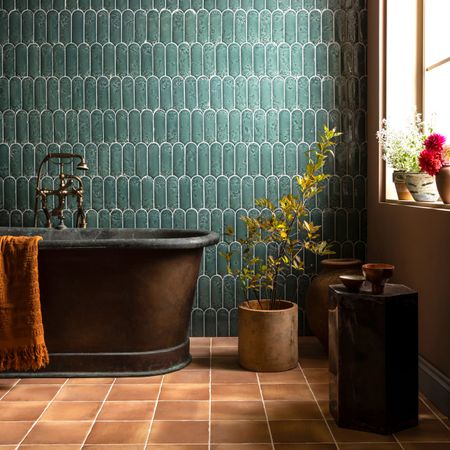 A tub carved from a single block of San Marino marble — and nine more beautiful things for the ultimate bathroom
A tub carved from a single block of San Marino marble — and nine more beautiful things for the ultimate bathroomThere's a bathroom out there for everyone — whatever your preferred style.
By Amelia Thorpe Published
-
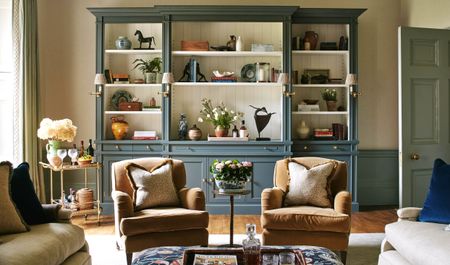 In search of the perfect comfy armchair
In search of the perfect comfy armchairWhat makes the ideal cosy, comfortable armchair? Arabella Youens asks some of Britain's top furniture experts to find out.
By Arabella Youens Last updated
-
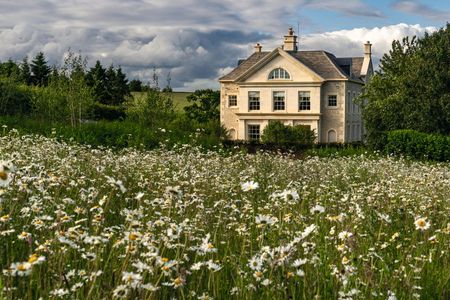 All the new entries in the Country Life Top 100 for 2025
All the new entries in the Country Life Top 100 for 2025Each year, our Country Life Top 100 is completely revised and updated — and several new names appear.
By Country Life Published
-
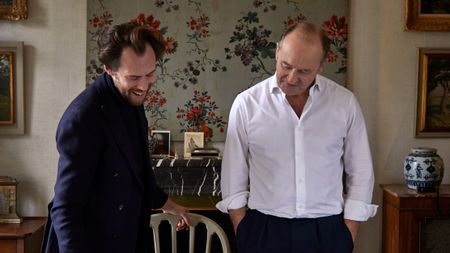 The timeless elegance of English country house style, with Guy Goodfellow and Steven Rodel
The timeless elegance of English country house style, with Guy Goodfellow and Steven RodelTwo of Britain's top interior designers share their wisdom with James Fisher on the Country Life Podcast.
By James Fisher Published
-
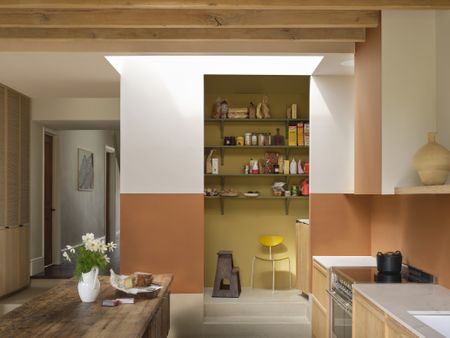 Dawn Chorus: Meet Farrow & Ball’s new paint colours, shop the must-have hotel merchandise and find out what Tom Parker Bowles likes to order from Greggs
Dawn Chorus: Meet Farrow & Ball’s new paint colours, shop the must-have hotel merchandise and find out what Tom Parker Bowles likes to order from GreggsIt’s time to redecorate because paint connoisseurs Farrow & Ball have added 12 new colours to their palette.
By Rosie Paterson Published
-
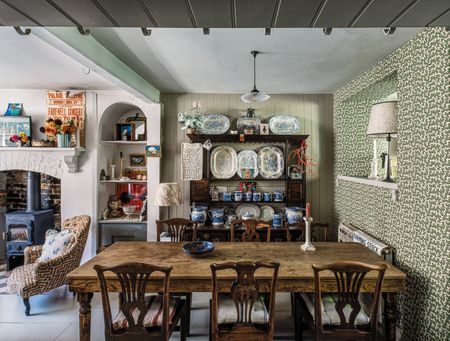 Why size doesn't matter if you've got some decorating derring-do
Why size doesn't matter if you've got some decorating derring-doA small space can be just as appealing as a large one — as long as you decorate with confidence, says a new book.
By Arabella Youens Published
-
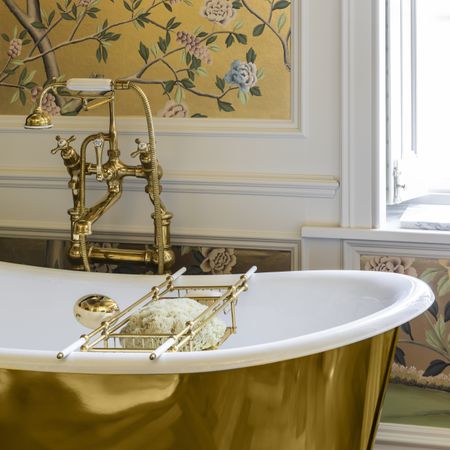 What this bathroom says about the return of the shiny surface
What this bathroom says about the return of the shiny surfaceBy Alexandra Goss Published
-
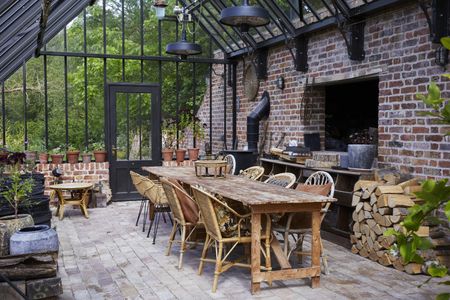 The art of glass: Is this the ultimate greenhouse for family entertaining?
The art of glass: Is this the ultimate greenhouse for family entertaining?This versatile greenhouse, designed for a family in Kent, and our round-up of the best orangeries, garden rooms and glasshouses is the only indoor-outdoor space inspiration you need.
By Amelia Thorpe Published